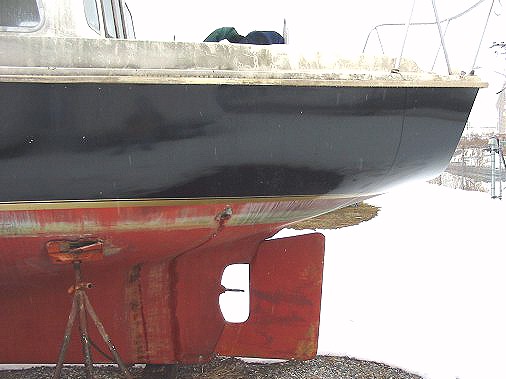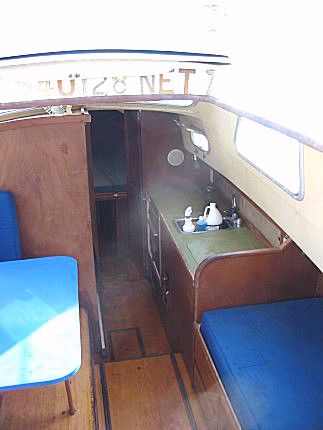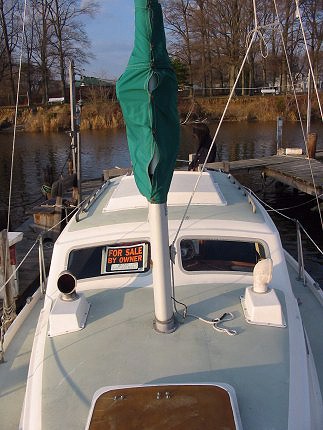Return to Pearson Info . . .
| Flyer
| 300
| 30
Boatcheck Owners Review
Listings from yachtword.com
Designer Shaw Main Area 178 Hull Speed 6.48
First Yea 1969 For Tri 172 SA/D 12.1
Last Year 1970 I 31.0 D/L 348
LOA 30.3 J 11.1 BR 38%
LWL 23.4 P 27.0 L/B 3.24
Beam 9.3 E 13.2 LWL /B 2.72
Disp 10,000 OR 23%
Draft 3.5 CSF 1.73
Sail Area 350 MCR 30.8
Ballast 3,800 M/F 1.04
Info on Design Ratios
This is a wierd little boat that Pearson made around 1970. I think it is a variation on the Wanderer. The hull profile and specs are identical? The sail area of the 300 is very small for it's size. It's barely larger then the P26 sail area and only 80% of the Wanderer. Have a look at the wanderer page:
Wanderer
Peter O Allen sent these comments info from a 1968 sailboat buyers guide:
The Pearson 300 was absolutely a variation on the Wanderer hull, without the centerboard, and with a relatively large pilothouse. The first reference I find for the 300 is in SAIL magazine's Sailboat Directory/1969, which probably appeared in late 1968. The text of the page says:
"Pearson Yacht's latest entry in the auxiliary market, the Pearson 300 features power to spare, a commodious accommodation plan, private forward cabin, large toilet room and an elevated dinette for picture window visibility. Her rig has been brought completely inboard to enable two people to handle her comfortably. The 300 is ideal for offshore cruising or for those leaving powerboating in favor of sail."
The page carries a profile of the hull's exterior and sail plan, plus a plan view of the interior layout and a cutaway elevation of the interior. There is no photo. I always thought it would be a neat boat to own for cruising, especially here on the Great Lakes, where the pilothouse might extend our relatively short sailing season. However, the literature does not show any interior helm station. A wheel is shown toward the aft end of the cockpit. As Dan notes, the sail plan is smaller. The 300's hoist on the main is only around 26' as compared to 31' on the Wanderer. (The print of the 300's sail plan is muddy and the sails' dimensions are not readable.)
It appears that few 300s were built and that very few remain today, although every once in a while one does come on the market. It's too bad that Shaw chose to leave the centerboard out of the 300, as it seriously detracts from the boat's windward ability, especially with the added windage of the pilothouse. When I fail to drop the board on our Wanderer I quickly find that the boat just doesn't seem to be doing so well when going to weather. It does go to weather, just not very well. One is quickly reminded that the board is not down! The page lists auxiliary power at 22, which suggests that Pearson contemplated powering the 300 with the Gray Marine engine which was also used in some of the early Wanderers and Coasters. The next page of the 1969 directory illustrates the Wanderer and lists power as "30 hp," suggesting the Atomic Four. Strange that they would put an engine with lower power in the motorsailer version, although they don't characterize the 300 as such, at least not in this ad.


1968

1969
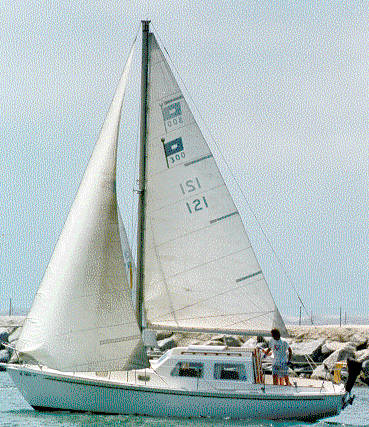




| L.O.A |
30’3" |
| D.W.L |
23’4" |
| Beam |
9’4" |
| Draft |
3’6" |
| Sail Area Mn |
168 sq. ft. |
| Jib |
178 sq. ft. |
| Hull Material |
Fiberglass |
| Displacement |
10,000 lbs. |
| Ballast (Lead) |
3,800 lbs. |
| Material |
Lead |
| Sail Area |
346 sq. ft. |
| SA/D |
12.1 |
| D/L |
272 |
| Headroom |
6’1" |
| Berths |
4 |
| Auxiliary Power |
22 HP |
| Water Capacity |
25 gals. |
| Fuel Capacity |
30 gals. |






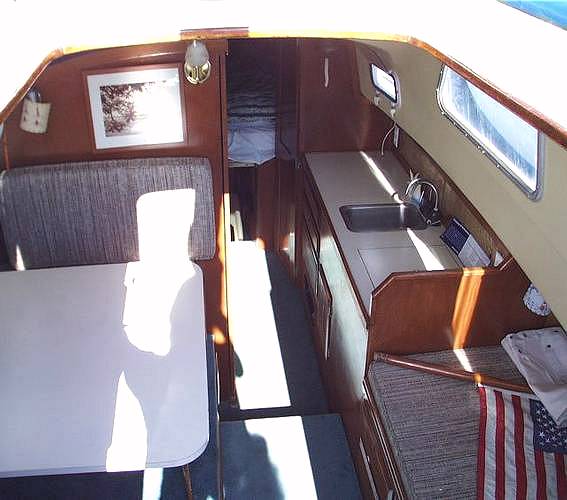



Great photos taken by Robb Holt




